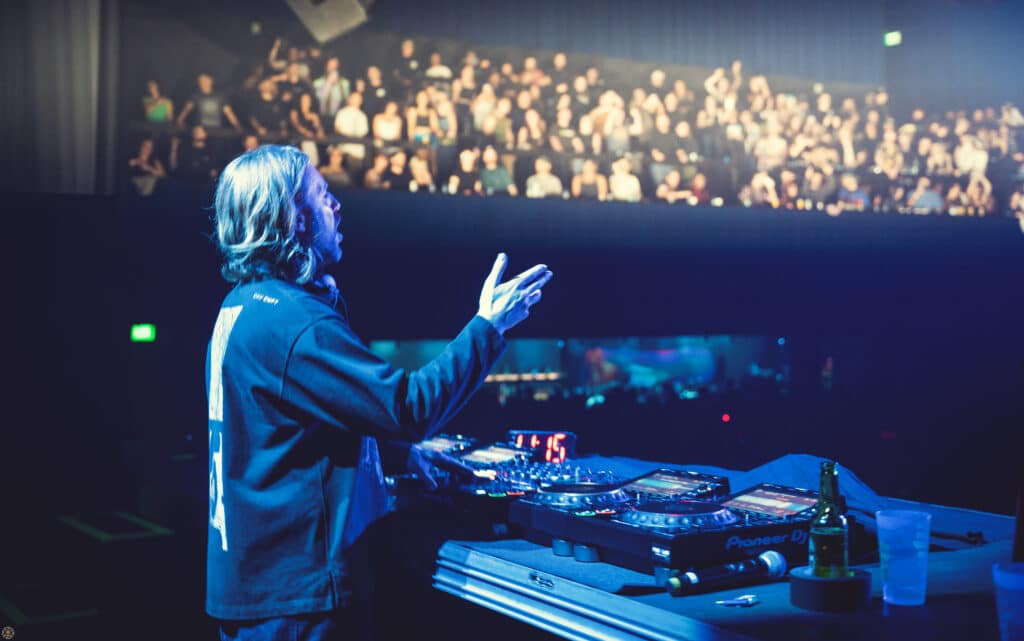Why is WORSHIP’s recent interview more polarizing among junglists than anything in recent memory? EDM Identity explores.
If you’re a dance music fan with any exposure whatsoever to social media in the past several days, chances are you’ve caught wind of the controversy surrounding WORSHIP‘s recent joint interview. The piece has sparked a furious debate among US jungle and drum and bass fans, landing group members Dimension, Sub Focus, Culture Shock, and 1991 in the figurative hot seat.
Did these artists mean to take full credit for the stateside drum and bass resurgence? Probably not, but that’s how it came across to some. Longtime US junglists have denounced the interview, taking to social media to declare that their scene never needed to be saved. Others have come to WORSHIP’s defense, arguing that it wasn’t their direct quotes that were the problem but how EDM.com positioned them.
Not to worry if you missed out on all the drum and bass drama (drama bass, if you will). EDM Identity has obsessively followed all the backlash on your behalf. Below is the abbreviated version with a few key takeaways to bring you up to speed.
What Was Said?
Most of the WORSHIP crew’s direct quotes were fairly benign, but a couple understandably rubbed US junglists the wrong way. Among those was Dimension’s statement that their “goal was to help bring the genre back into vogue by encouraging a fresh, young, inclusive community of fans into the genre.” He went on to say, “We like to think we’ve played a key role in this growth.”
Another quote from Dimension particularly ruffled the feathers of drum and bass fans. “The North America drum & bass scene was in such bad shape that we arguably had nothing to lose, but the promoters and agents deserve a massive amount of gratitude for backing us and believing in our concept,” he said.
Many defending WORSHIP — who drew a record crowd of nearly 4,000 to their tour stop at Mission Ballroom in Denver — have accused the article’s author of characterizing them in a way that they didn’t likely intend. Its subtitle credits Dimension, Sub Focus, 1991, and Culture Shock for “leading the genre’s stateside surge,” and one passage refers to them as “lynchpins of today’s movement.”

…And What’s the Problem?
Like any underground subculture, diehard fans of drum and bass tend to be protective of their genre of choice. Some consider it erasure that the article makes no mention of US drum and bass forerunners like AK1200 or Dieselboy, let alone UK junglists such as Fabio & Grooverider and Goldie, who paved the way before them.
“I was there right at the very start of the US dnb scene…” wrote British DJ Jumpin Jack Frost on Facebook. “We had a 2 year residency at Twilo in New York and the Viper Rooms in Los Angeles. “…The scene in the states has always been a core of dedicated junglists who have fought for this music for decades often with little or no rewards … All I will say is the American dnb scene doesn’t need saving as its beautiful in its uniqueness.”
Others, like New Zealand emcee Tali, have pointed out that the US drum and bass scene was once much more active but took the backseat to heavy dubstep during the EDM explosion. “We noticed the shows weren’t as big anymore, the clubs and venues definitely got smaller to cater for this, but the vibes remained the same,” she wrote in a Facebook post. “The promoters still worked hard.”
The Rebuttal
None of the DJs quoted in EDM.com‘s interview have issued a statement on the backlash, nor have they responded to EDM Identity’s request for comment. Niko Sani, who wrote the original piece, defended it in a conversation over Messenger, however.
“It definitely caught me off guard but I see where people are coming from,” he wrote. “I think the message and intention was a bit misinterpreted by some. For one, the article was an interview, not a history lesson on drum & bass in the US.”
Sani continued: “I understand that drum & bass has been here for a long time and everyone who contributed to the underground deserves their flowers. That just wasn’t the point here. Drum & bass is undeniably seeing a surge right now, especially in the mainstream festival circuit. That’s huge. I think both sides of the coin deserve attention, but my goal was to capture the now and not the then.“

Doing Drum and Bass Justice
EDM.com has arguably done right by junglists in the past. In a 2020 piece that predicted some aspects of the recent drum and bass resurgence, Phil Scilippa did his due diligence, naming both the UK and US pioneers of the genre.
Does it really matter? That depends on whom you ask. To the fledgling fan who just discovered drum and bass at a stop on the WORSHIP Tour, maybe not. To them, the appeal likely lies in how new and different it seems, and the last thing on their mind is the three decades of history that led up to the unforgettable moments they’ve just experienced.
For the dedicated junglists who have arguably laid that foundation, however, that makes this even more of a teachable moment. In their wide-eyed enthusiasm, newfound junglists may be open to learning about the UK history of drum and bass — how, in 1994-95, it evolved out of the more sample-based jungle, which, in turn, evolved out of breakbeat hardcore in 1991-92. They might even take the time to look up early releases on seminal labels like Reinforced Records, RAM Records, and Moving Shadow.
If there’s something to be gleaned from all this, it’s that anytime a dance music genre arrives back in the mainstream spotlight, its underground following will likely have something to say about it. That dialogue often takes an adversarial tone, but it doesn’t have to.








